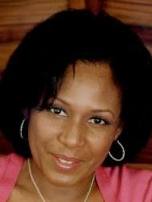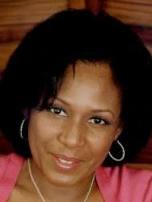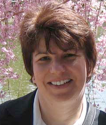The $4450 Urgent Care Visit – Systemic Waste in Health Care
This is a reposting of an earlier version that was authored and has been updated by Lauren Castiglia, RN, BSN, a graduate nursing student at Hunter College.
 He wakes up clenching his stomach and calling for help. My roommate is clearly in pain and from the scene, most likely it is the worst pain of his life. The nurse mode in me kicks into gear: PQRST. I rattle off questions: Where does it hurt? When did it start? On a scale of 0 to 10… Through moans, groans, and mumbled answers I gathered that, although it may not be an emergency, it is urgent and we need help. We rush to the nearest urgent care center to seek a cause and possibly a cure. What we find instead induces a headache of equal portion to my roommate’s stomach pain. The patient is 30 years old with no past medical history and no health insurance. The urgent care center is a privately run facility with physicians, licensed and unlicensed staff, and the basic medical supplies and imaging equipment of an average urgent care center. It is a simple business model: The physician prescribes and treats and the patient writes a blank check. However, as a nurse, I ask questions upfront: What are the prices of the visit and incidentals? One of the front desk assistants gives me a partial price list for an out-of-pocket payment. During the visit, I clarify with the physician which tests are being ordered and why and I keep mental notes of the incidental costs: the IV fluids, medications, lab work, imaging, etc. In the end, the lab reports and imaging are inconclusive. The physician recommends that my roommate see his primary physician to follow up; the primary physician he does not have because of the health insurance his employer does not provide. I tell my roommate, “I bet our bill will be about $1,500.” He laughs at me saying, “There’s no way it could be that much.”
He wakes up clenching his stomach and calling for help. My roommate is clearly in pain and from the scene, most likely it is the worst pain of his life. The nurse mode in me kicks into gear: PQRST. I rattle off questions: Where does it hurt? When did it start? On a scale of 0 to 10… Through moans, groans, and mumbled answers I gathered that, although it may not be an emergency, it is urgent and we need help. We rush to the nearest urgent care center to seek a cause and possibly a cure. What we find instead induces a headache of equal portion to my roommate’s stomach pain. The patient is 30 years old with no past medical history and no health insurance. The urgent care center is a privately run facility with physicians, licensed and unlicensed staff, and the basic medical supplies and imaging equipment of an average urgent care center. It is a simple business model: The physician prescribes and treats and the patient writes a blank check. However, as a nurse, I ask questions upfront: What are the prices of the visit and incidentals? One of the front desk assistants gives me a partial price list for an out-of-pocket payment. During the visit, I clarify with the physician which tests are being ordered and why and I keep mental notes of the incidental costs: the IV fluids, medications, lab work, imaging, etc. In the end, the lab reports and imaging are inconclusive. The physician recommends that my roommate see his primary physician to follow up; the primary physician he does not have because of the health insurance his employer does not provide. I tell my roommate, “I bet our bill will be about $1,500.” He laughs at me saying, “There’s no way it could be that much.”
At the end of our five-hour stay we are billed $4,450. While reviewing the bill, I ask the front desk assistant to clarify some of the charges. The visit price is twice as much as was listed on the price list. Two CT scans are charged when the physician said only one would be required. It continues on like this for a little while and finally, I ask to speak with the physician. He is rather surprised that I am questioning the bill or for that matter, even understand it. He is even more surprised when I refuse to pay for some of the items listed. However, after I explain why, he concedes and decreases the bill to a more appropriate amount. My roommate is lucky. As a layperson in the US healthcare system, he has an advocate. Most of the population does not and because of this, there is a major problem in our healthcare system: systemic waste and the inability to contain healthcare costs.
According to Institute of Medicine president Harvey Fineberg, “An Institute of Medicine panel recently estimated annual excess cost from systemic waste at $765 billion – including $210 billion in unnecessary services, $130 billion in inefficiently delivered services, $190 billion in excess administration costs, $105 billion in excessively high prices, $55 billion on missed opportunities for disease prevention, and $75 billion in fraud.” This story exemplifies each of these wastes. The urgent care center preformed unnecessary services that took five hours to complete with an approximate total waiting time of three and half hours. Although the urgent care profit margin was undisclosed, there were high quality Matisse prints on the wall and one front desk assistant spoke to a friend unfettered by the daily business of the center for the greater portion of the time I spent in the waiting room – it would seem to an outsider that their administrative costs and high prices could be decreased if they were so inclined to do so. There was undoubtedly a missed opportunity for my roommate to receive primary care prior to this episode and there was clear attempted fraud in charging for services that were not clinically indicated. This was one patient on one day in one healthcare facility incurring every form of systemic waste Fineberg puts forth in his article. I suppose then $765 billion does not seem to be such an unfathomable number.
However frustratingly common this situation has become, there seems to be a gleam of hope: this problem, by comparison to other obstacles that face the US healthcare system, seems to be somewhat easier to remedy. One way to do so is through transparency. According to the US Department of Health and Human Services’ website HHS.gov, “Transparency provides consumers with the information necessary, and the incentive, to choose health care providers based on value. Providing reliable cost and quality information empowers consumer choice. Consumer choice creates incentive at all levels, and motivates the entire system to provide better care for less money.” With transparency comes accountability and it provides better care at a lower cost because it creates an environment of competition on an even playing field. Like the HHS suggests, industries like the cell phone and banking industries have created this type of competition and an even playing field because they developed infrastructures and industry standards that allow consumers to compare and evaluate companies within the industry so they can make informed, value-driven choices. In the end, high quality and low cost businesses are rewarded and everyone prospers. If the US healthcare system can mimic this type of even playing field and create these kinds of industry standards and infrastructures either through self regulation or federal regulation, it will be able to better serve the US population while containing costs and eliminating waste. It would require a strong commitment from the federal government, employers, healthcare plans, and healthcare professionals to share information in order to develop quality and pricing standards. These standards could then be used to “help guarantee a fair and accurate view of the quality of care delivered by individual providers, as well as providing consistent measure for quality.” Because a system like this offers incentives for healthcare entities to move towards a more efficient system, this transparency plan would be easier to implement than a plan that does not induce such incentives. If transparency becomes a keystone of the US healthcare system, I believe we will make strides towards a better, more efficient and accessible healthcare system for all.
This is a reposting of an earlier






